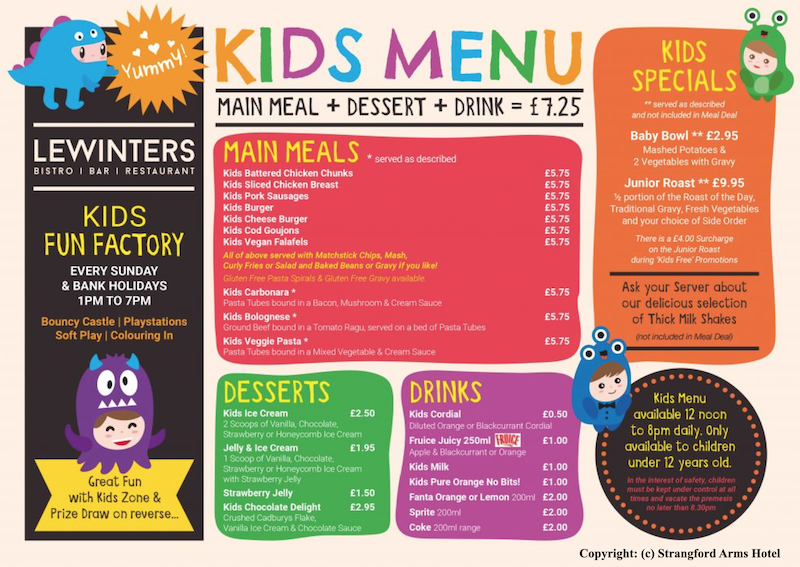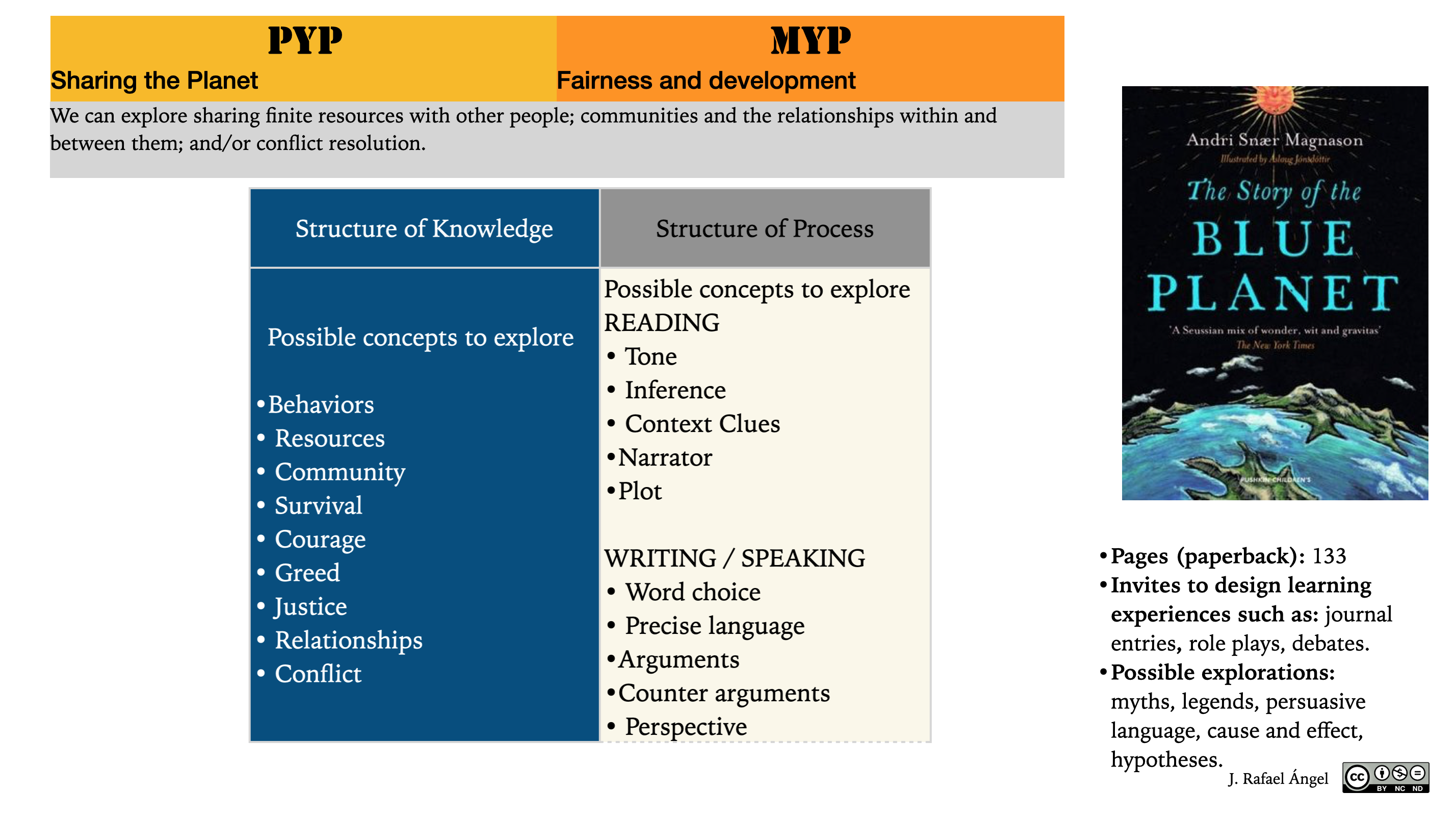Tagged: Concept Based Language
Font types communicate a meaning
Students require a set of specific language items to analyze the visual and linguistic conventions of texts, and to explain the relationship between different elements of the texts. For this reason, it’s crucial to design instruction that authentically and explicitly incorporates language that they will eventually use.
In secondary, some educators may feel that this terminology is not appropriate for the earlier stages of language, but I wonder how we come to this decision when every text students consume models the features of the texts they will produce. For this reason, I prefer to introduce key vocabulary items that will help students to name text features, and gradually talk about them and their relationships. What is more, I have found success in using these vocabulary items to practice concepts such as number, gender, noun-adjective agreement, and even in explorations that include descriptions and inferences.
How would you use the tex below, which is a brief introduction to font psychology, with students at an earlier stage of the language learning process?
Source of the image above and more ideas here.
Identifying concepts for the language-learning journey
I have been asked ‘where I get all the concepts that I state in my generalizations from’, and ‘how I know at which stage of the learning continuum to address them explicitly’. The answer for this inquiry is “The Unit Web”.
The unit web is a powerful planning instrument designed by Dr. Lynn H Erickson and further developed for process-based disciplines by Dr. Lois Lanning. The unit web we consider for concept-based language instruction includes 4 strands (understand, respond, critique, produce) which, while they are not an inquiry cycle, suggests learning habits and behaviors in which teachers and students collaborate in order to learn the language, learn through the language, and learn about the language.

As you can see in the example above, a series of concepts to focus are outlined in each strand. These are the concepts we would use to produce relevant generalizations for each strand. Once these conceptual relationships are stated, we will be able to identify which is the overarching generalization, which are the generalizations that signal the understandings that will serve as foundations for the unit (understand); which are the generalizations that reveal information about the class mindset (respond); which are the understandings that we need to quality assure before asking students to produce their final outcomes (critique); and the concepts we need to consider to assess students’ performance (produce).
The follow up comment is, “that is a lot of concepts.” And I follow up by saying, “but that is explicit and intentional learning, and not a fantasy in which we pretend to be teaching conceptually and all we do is create a statement of conceptual relationship that one cannot even investigate.”
I have included a resource for this unit planner to show how concrete generalizations from a specific strand help to design inquiries, learning engagements. The generalization is the understanding we would like students to achieve through the inquiry we’ve designed.
Media, Bias, Fake News and Information
When we design concept-based language inquiries, it is important to harmonize all resources and learning experiences with the over arching generalization. This will allow us to intentionally create opportunities for students to inquire into the concepts we want them to find a relationship between, and to use the examples resources we use to explain or justify their conceptual understandings.
It is crucial that we support students to move from the semantic aspects of nouns that serve as concepts (meaning) to a real conceptual level at which they can see how concepts interplay with one another. For this reason, if the design of our learning experiences and scenarios are not intentional and explicit, studenst will only be exploring the surface of concept-based language learning.
I would like to share two lessons plans for a unit. In the images below you will be able to see the goals of the unit, the generalization that guides the inquiry, and the summative assessments for which we are building conceptual understanding and skills. Hopefully, these two lesson plans will help you see the sequence from one lesson to another, how conceptual explorations and understandings connect and can be sequenced, as well as the role of language and grammar in the inquiry.


Analyzing conventions in texts for different audiences
Pay attention to the following texts.


Suggestions for analyzing the conventions of texts.
It is important to keep in mind that students need to know the name of the iconographic and communication elements that are used to design texts in advance.
The appearance of the texts helps determine the target audience for each of the texts.
- Identify the iconographic and communication elements that were used.
- Inquire about the reasons why a specific target audience requires that the information be presented in a certain way.
- Investigate the elements that are most appropriate for each type of audience (information consumers).
- Explore how elements such as space, fonts (type and size), colors, icons, vectors are used to create texts for different types of audiences (consumers of information).
- Consider, depending on the type of text, the information that audiences can understand and respond to (this helps to determine why some iconographic and communication elements are not used when one has a certain target audience in mind).
- We should keep in mind that in order for students to be able to analyze the conventions of a text, they need to follow several steps: learn the meaning of words (conventions); remember the meaning and name each of the elements; understand its connection with the type of text and target audience; understand the relationships between all elements of the text and recognize how they contribute to the meaning, message, and purpose of the text. When students can do all of this, then they can analyze.
For this reason, it is advisable to scaffold the analysis process to help students to consolidate their performance in each step and thus continue moving forward.
On Government, love, and time
Imagine reading a story that will help you and your students discuss how we experience time; what it means to us; how we’re responsible for the misuse of it; how it shapes how we relate to others; and how we experience love and justice.
Imagine the variety of inquiries that we could design to explore love, time, government, and the outcome of our decisions… good and bad.
Andri Snær Magnason’s The Casket of Time takes readers on a fantastic journey. While most appropriate for English language and literature studies, in MYP, students at the end of phase 3 in Language Acquisition should be able to access this book.
The following generalizations are examples of the statements that may guide the design of units of inquiry.
SOK:
Governments demonstrate power through the decisions they make.
Decision-making in politics reflects the practice/essence of different philosophies.
SOP:
Writers use characters to voice relevant ideas.
Writers use different narrative modes to tell stories.
Readers explore narrative points of view to link the narrator to the unfolding story.

A few generalizations to carry out Interdisciplinary Units (IDU) between Language and Literature and Humanities can be:
- Democratic societies should balance the rights and responsibilities of individuals with the common good.
- Government decisions determine the well-being, opportunities, and integration of a society.
- Access to political resources determines the extent of power and influence in politics.
- Narrative modes could encompass storytelling elements, narrative point of view, narrative tense, and narrative voice.
In a world of children
The Story of the Blue Planet is a great work of fiction for grades 5-6 and for learners of English as an additional language with an intermediate-high intermediate level. Imagine a planet is inhabited solely by children who never age. But then an adult arrives and…

Listen to the author, Andri Snær Magnason, read the book. Each part is between 20 and 30 min long.
Part 1 Part 2 Part 3 Part 4
Part 5 Part 6 Part 7
Interdisciplinary learning ideas
This literary work can serve as the base to design an interdisciplinary expleriencea among Language and Literature and Individuals and Society. Below are a few generalizations that may show an idea of the explorations that can be designed through this book.
Communities manage resources in order to ensure fairness.
Communities share resources responsibly in order to avoid conflict.
Societies create agreements and a variety of systems so that communities function in harmony.
Individuals assess decisions considering facts, evidence, and the desired outcome.
Exploring concepts through real-life situations
Take a close look at all the information and data presented in this multimodal text.
In what explorations and inquiries would it be appropriate to use it?
What time tenses and grammar would you consider practicing through/with it?
What concepts for content and processes would you address?
You can view the original version in Spanish here.

Here is an idea.
Remember that when designing concept-based language instruction units, we need to consider both the structure of knowledge (SoK) and the structure of process (SOP).

We’re all guilty
We’re All A Little Guilty
Joanna Walczykowska, Poland
Themes: Knowing and standing up for our rights and the rights of others; importance of solidarity in the face of injustice.

Questions
Ask students what they make of the poster
When do people use fingerprints? What for?
One of the roles fingerprints play is to serve as a signature for people who are illiterate when they need to present their signature or vote.
Fingerprints are considered a universal human characteristic. However, each fingerprint is unique, enabling you to stand out from the crowd and assert your own identity. Is it important to assert your individual beliefs and speak out in the face of injustice?
What might the saying at the bottom mean?
If we quietly“tolerate” or don’t speak out against racism, are we passively condoning it? Is it sometimes dangerous to speak out for justice? What can help?
As rights-holders, do we have the responsibility to defend the human rights of others?
Family and Perspective
Some teachers may think that it is difficult to practice concepts intentionally in early stages of additional language acquisition. This may be so if we only limit the experience to one or two examples in the culture of the language we are teaching.
In order for students to identify patterns, and to be able to establish relationships, it is very important that they explore a variety of sources linked by the concepts we are exploring. In other words, if those resources do not offer us opportunities to intentionally address the concepts we want to inquire into, then we have a problem with the design of learning.
Consider this resource:
What do the following overarching generalizations make you think about in terms of learning experiences? Which one is more challenging or for higher levels of language?
SOK:
Societies structure family systems considering people’s roles.
Societies structure families according to beliefs and values.
Family structures around the world vary due to economical and personal situations.
Perspectives about family vary from culture to culture.
As you choose the overarching generalization that you would like to explore, think about the language you would need to explicitly model for students; about the structures and situations in which they would need to practice; about additional supportive texts that you will need for them to explore; and about formative assessment strategies you may need.
Process-based generalizations are (somewhat) flexible in the sense that they adapt to the language we want to practice and master, and depend on the purpose of communication we want students to consider when they produce their texts.
Welcome new words

- What texts would you use to enrich your teaching context?
a) What concepts would be the focus when using these texts? - What texts would you ask students to produce?
a) What concepts would be the focus in these tasks?
Thinking about the two bullet points above wil help you articulate your generalizations effectively.
If you want to establish connections with TOK, consider this video.
Knowledge and technology
Scope:
To what extent is the internet changing what it means to know something?
How does technology extend or transform different modes of human communication?
Knowledge and language:
What role does language play in allowing technological knowledge to be created and shared with future generations?
Is it the case that if we cannot express something, we don’t know it?
Perspective:
What knowledge might be lost if the certain languages cannot create their own terms to describe new concepts produced by innovations?
Methods and Tools:
To what extent do the names and labels that emerge from innovations and advances help the development of knowledge?








